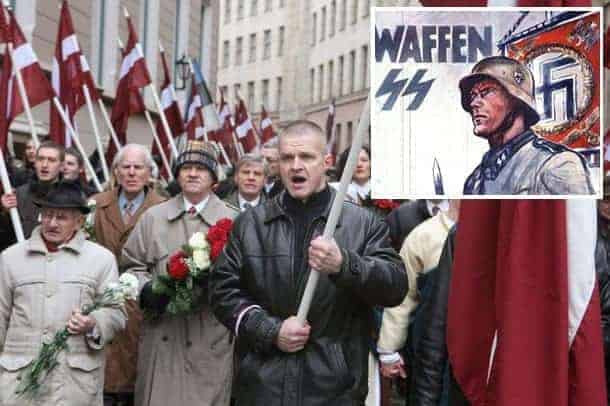In March 2016, a parade in Riga, the capital of Latvia, honored the veterans of Latvian Legion. The men not only survived World War II, but they lived through a specific 1944 battle.
The celebration was controversial because the Latvian Legion was an ally of the Nazis, and more specifically the German Waffen-SS, to fight the Soviet Army. Nevertheless, over 1,000 people marched through the streets of the Riga in the area known as the Old Town. A strong security presence was planted along the route.
The Problem with the Parade
Since leaving the Soviet Union and joining the European Union, much of Latvia’s Russian minority felt disrespected by the parade. A quarter of Latvia’s two million people identify as Russian. They aren’t in favor of the Legion or what it represents. In fact, Moscow thought the celebration glorified the Nazis as well. Jewish groups equally had concerns.
Simon Wiesenthal Center representative Efraim Zuroff explained that “It’s a very sad day to see these people marching and to see Waffen-SS troops glorified as freedom fighters…Anyone who fought for the victory of the Third Reich shouldn’t be a hero.” Like Simon Wiesenthal himself, Efraim Zuroff also played a significant role in seeking justice for Jews by indicting Nazis and other fascist World War II criminals to trial.
Every March 16, the veterans of the Latvian Legion honor the date of the 1944 battle and march throughout Riga. The Legion actually lost that battle, as the men were unsuccessful in stopping the Soviet advance. This failure led to Latvia being subject to the Soviet occupation of nearly 50 years. The soldiers can still recall the fateful day they tried to defend their homeland.

Eduards Zirdzins, told the Latvijas Avize newspaper, “I’ve faced death – in the Legion and when I was sent to Norilsk [a Soviet prison camp]. Since returning, I see every day as a gift to be appreciated.”
The Nazi-Soviet Pact of 1939
Also known as the Molotov-Ribbentrop Pact, and officially known as the Treaty of Non-aggression between Germany and the Union of Soviet Socialist Republics, this treaty granted a neutrality agreement between the two countries. It was signed by German and Soviet foreign ministers Joachim von Ribbentrop and Vyacheslav Molotov, respectively.
After the joint invasion of Poland, this pact remained for almost two years, which allowed the Russians to control Latvia. Tens of thousands of Latvians were deported to Siberia. This forced the majority of Latvians to deeply resent the Soviets. The Soviet Secret Police (NKVD) arrested thousands of Latvians while they occupied the country.

Other stipulations of the pact included the division of areas in Poland, Lithuania, Estonia, Finland, and Romania, as well as Latvia. Adolf Hitler and Joseph Stalin agreed not only to the written guarantee of non-belligerence between their countries, but they secretly wanted to control the territories known as political “spheres of influence.”
The Invasion of the USSR
As history explains, Adolf Hitler ended the pact on June 22, 1941, when the Germans attacked Soviet positions in Eastern Poland under Operation Barbarossa. The Nazis then invaded the USSR.
Because of bad blood between Latvia and the Soviet Union, many Latvians joined the Legion and fought against the Soviets, even if it meant they were allies to the Nazis. The Latvian Legion veterans believe they were fighting for their own independence from the Soviet rule.
Although they fought alongside Nazis, the soldiers proved to be strong fighters in defending their country. Claims have led many to believe that the Legion, or at least some of its members, took part in murdering Jews, especially during the German invasion of Latvia in 1941. The early stages in which the Nazis overtook and occupied the country are quite discerning.

